





Fog rolled in yesterday evening, but within an hour it will all be burned off. The sun is strong. The air smells dry and dusty, but also oddly sweet. The wild oats are well on their way to turning yellow and the ripgut brome adds a few swatches of burgundy. Insects buzz. Where the mustard is not thick, the last of the season's clarkias sway in the light breeze. On a rocky outcrop, a couple of yuccas send up flower stalks like exclamation points, alerting us that something is about to happen.
(If you would like some mood music, click the video at the end of the article.)
At the edge of the woodland, a grizzly bear sniffs the air. Fifty yards away, laying in a clump of bunch grasses, an injured calf lets out a bawl. The bear lifts its head and lopes toward the calf. The bear knows better than to attack a full-grown Spanish longhorn, but here is an easy meal. Suddenly, four horseman appear over the nearest hill and in no time have lassoed and immobilized the "oso grande" (big bear). You can sense the relief in their voices. They are relieved at finally capturing the beast that has been terrorizing the ranch, but also relieved that it was merely a flesh and blood bear and not an evil bear shaman or nunasis*.
Grasslands exist where climate, soil conditions, and fire frequency prevent the growth of trees and other woody plants. One climate condition that favors grasslands is the presence of a distinct dry season. Much of California experiences the mediterranean climate and thus has very dry summers. This has resulted in the existence of many grassland areas in cismontane California. This article deals with the coastal grasslands, which are generally found within 50 miles of the coast and below 5,000 feet elevation. Proximity to the ocean has a great effect on the local climate. Places within a few miles of the ocean are warmer in winter, cooler in summer, and more foggy than inland locations.
Winter and spring are the growing seasons. That is when the rain falls. The temperature is usually mild though some nights can fall slightly below freezing, particularly in inland valleys. On occasion, snow might fall down to 2500 foot elevation, but it is quickly melted. Sunny winter days are often above 60°F. There is virtually no rain in summer. Along the coast, the cold ocean keeps the air temperature under 80°F most of the time and early summer can be the cloudiest and foggiest time of the year there. However, temperatures can exceed 100°F inland though it routinely cools down by 30 degrees or more at night. Fall can be as hot as summer and days of very low humidity and drying winds are common. Summer and fall may seem like tough seasons to survive, but life flourishes.
Before the Gold Rush, the wealth of California was found in herds of cattle. Cattle were first brought by the Spanish in the late 1700s and ranching continues to a lesser degree to this day. As the Native Americans lost their land and traditional lifestyles to Spanish, Mexican, and American conquest, settlement, and policies, the Natives were able to survive, in part by finding employment on the great ranchos. Some became cowboys. The Spanish land grants no longer exist as entire pieces of property, but the names and boundary lines can still be found on modern topographic maps.
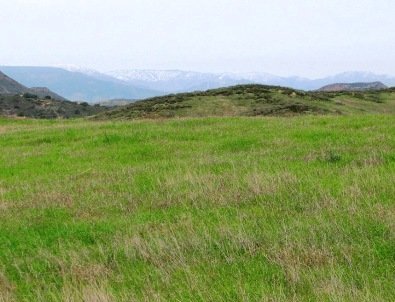
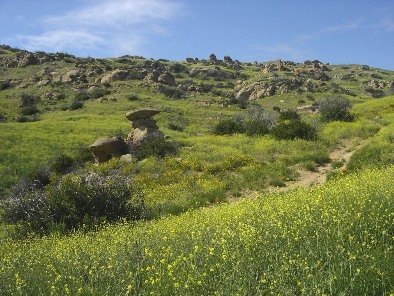
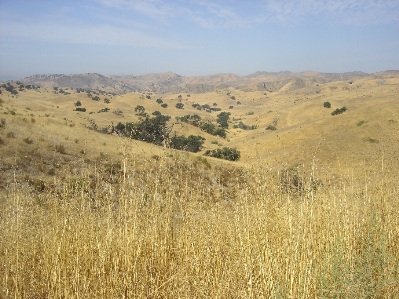
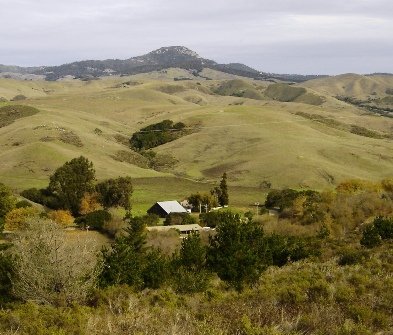 Rancho El Conejo (now Santa Monica Mountains National Recreation Area), late winter
Rancho Ex-Mission de San Fernando (now Chatsworth Oaks Park), late spring
Rancho San Jose de Nuestra Señora de Altagracia y Simi (now Upper Las Virgenes Open Space), mid summer
Rancho de la Piedra Blanca (private land, San Luis Obispo County), early winter
Rancho El Conejo (now Santa Monica Mountains National Recreation Area), late winter
Rancho Ex-Mission de San Fernando (now Chatsworth Oaks Park), late spring
Rancho San Jose de Nuestra Señora de Altagracia y Simi (now Upper Las Virgenes Open Space), mid summer
Rancho de la Piedra Blanca (private land, San Luis Obispo County), early winter
The coastal grasslands are not vast prairies like the Great Plains. They are broken up by woodlands and scrublands. The grasslands themselves contain more than grasses, of course. Like the other grasslands of the world, California coastal grasslands contain annual herbs, geophytes, perennials, and scattered trees. Some areas of a grassland may have enough notable non-grasses present that these areas form their own ecosystem subsets, like oak savanna, walnut woodland, and cactus scrub. The oaks are scattered individuals and are not close or numerous enough to be considered a woodland or forest. The trees can be as wide as they are tall with massive trunks, and include species like valley oak, blue oak, and Engelmann oak. Like the oak woodlands, the walnut woodlands consist of loose groupings of trees. The native walnuts, like the southern California black walnut, are small and usually multi-trunked trees . The nuts are small but edible. The cactus scrub consists of impenetrably dense clumps of prickly pear cactus like Opuntia littoralis.
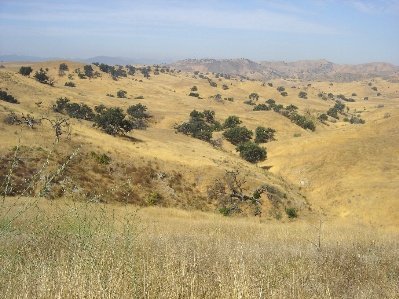
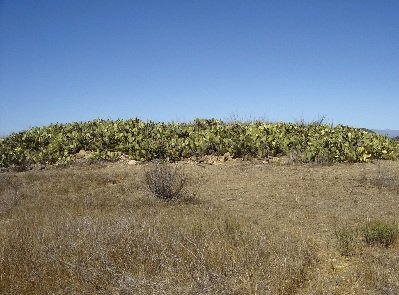
Valley oak savanna, Simi Hills
Cactus scrub, Santa Monica Mountains
California grasslands are probably one of the most floristically altered natural ecosystems in the world. Most areas are dominated by non-native annuals like wild oats, ripgut brome, fennel, and black mustard. This takeover occurred so early in European/American settlement and occurred so rapidly that there exists no written documentation of the exact makeup of the original grasslands though it is thought that they contained more perennial grasses than are seen currently. It seems unlikely that the grasslands will ever return to their original condition. Even where grazing and human alterations have been absent for generations, the non-natives are still very numerous. Take this as a cautionary tale about introducing non-native plants, however, do not think of this as a degraded landscape. The flora and fauna variety is still rich.
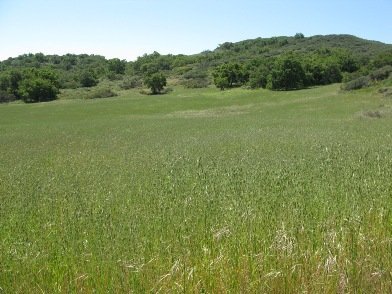
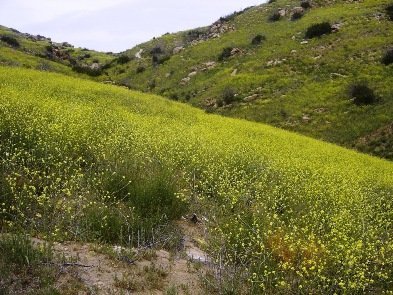
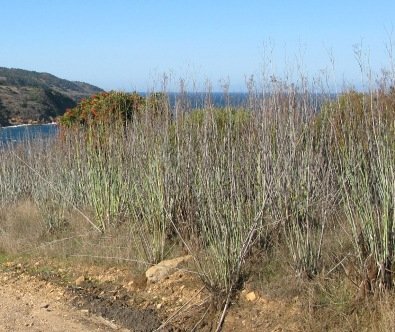
Wild oats, Santa Monica Mountains
Mustard, Santa Monica Mountains
Fennel, Santa Cruz Island
Where the non-natives are not too thick, the native plants can be found. One of the most easily recognized native perennial grasses is giant rye grass. The clumps of grass are taller and more robust in appearance than the other grassland grasses. Another highly visible native is the wild gourd. Its green leaves contrast with the brown fall grasses and the yellow fruits draw attention. Overall, shrubs are largely absent from the grasslands, though they can be found in habitats like chaparral or sage scrub, which are never far from any given stretch of grassland.
Perhaps the most distinctive feature of California coastal grasslands is the fact that they turn golden brown early in the summer. In the Los Angeles and Ventura Counties area, the hills typically are brown from some time in May until some time in January. Even if it were to rain more in late spring and early summer, they would still turn brown. As an adaptation to the climate, the grasses have a short lifespan in which they grow and set seed. They do not seem to have the genetic makeup to live more than a few months.
Wildflowers are at their most numerous in the late spring, though something may be found almost all year. In some special places and under special conditions, whole hillsides may be blanketed with flowers, but in most cases, flowers are found in smaller groups and as isolated specimens. As is typical for the region, wildflowers are usually found in the greatest quantity and variety the spring after a fire. The photos below show a sample of the many species of wildflowers that can be found in the grasslands.
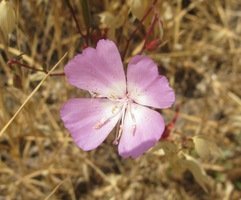
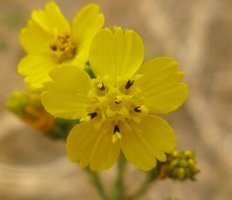
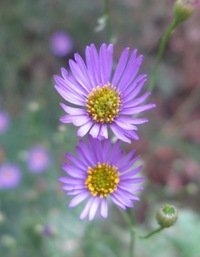
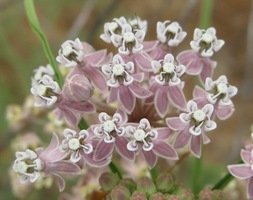
Farewell-to-Spring (Clarkia bottae)
Slender Tarweed (Hemizonia fasciculata)
Fleabane Aster (Erigeron foliosus)
Narrow-Leafed Milkweed (Asclepias fascicularis)
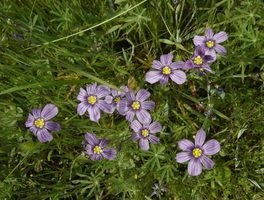
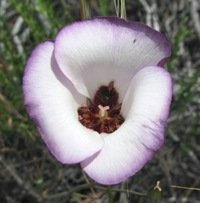
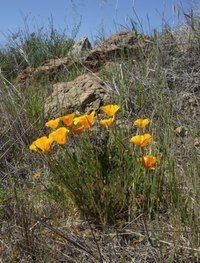
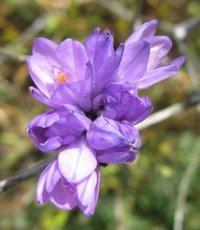
Blue-Eyed Grass (Sisyrinchium bellum)
Catalina Mariposa Lily (Calochortus catalinae)
California Poppy (Eschscholzia californica)
Blue Dicks (Dichelostemma capitatum)
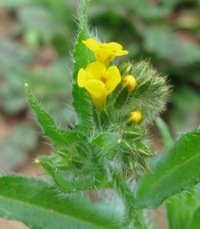
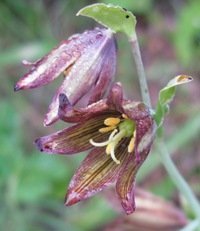
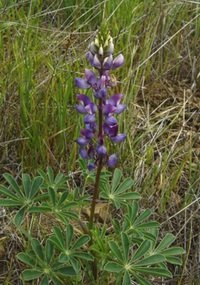
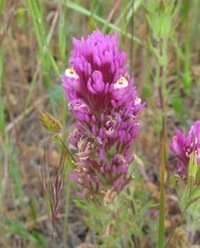
Common Fiddleneck (Amsinckia menziesii)
Chocolate Lily (Fritallaria biflora)
Arroyo Lupine (Lupinus succulentus)
Owl's Clover (Castilleja exserta)
California grasslands are not just a bunch of dead grass. Although the original flora has been altered, many species are still present. Grizzly bears are gone, but deer and coyotes are still common. Various human ways of life have come and gone, though cattle still graze on some of the hills. Some lands in the natural state are open to the public as parks, where anyone can get a feel for wild, old California and imagine the days when the cowboys were Indians.
The following is a list of parks where California coastal grasslands can be seen. This is not at all a comprehensive list and if your favorite grassland park is missing, be sure to mention it in the comments section. Note that parks may be closed at any time due to fire danger, severe weather, or budget cuts. If in doubt, call before you go.
Related Articles
* nunasis - in Chumash Indian lore, an evil supernatural monster
Thumbnail image is "Vaqueros" by Charles Christian Nahl, painted in 1866. All other photos are property of Kelli Kallenborn.
Click this image to play the background music.
Copyright © www.100flowers.win Botanic Garden All Rights Reserved